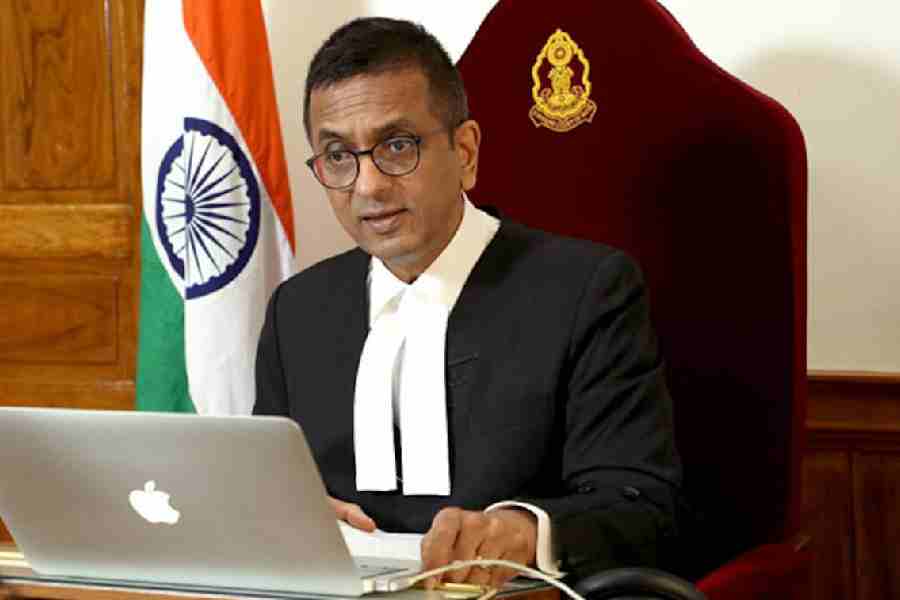A ‘platform’ will assess ‘top’ 50 judges before appointment in SC: CJI
Context
Chief Justice of India D.Y. Chandrachud said on Friday that the Supreme Court, working with a young team of distinguished scholars, interns, and law researchers, had prepared a “broad platform” to assess each of the country’s “top 50 judges” who would be considered for appointment as Supreme Court judges.
How are the Judges appointed in India?
- Appointment of Judges: Judges of the Supreme Court are appointed by the President following consultation with the Chief Justice of India and other senior judges of the Supreme Court and High Courts, according to Article 124 of the Indian Constitution.
- Evolution of the collegium System: The Bar Council of India’s recommendations from 1981 are what gave rise to the idea of the collegium system, in which a group of judges recommend nominations to the President.
- Second Judges’ Case (1993): In this case, the Chief Justice of India and the senior-most judges were consulted before the President was appointed, overturning the earlier process of appointment. With the opinions of senior judges taken into consideration, the Chief Justice’s judgement was regarded as collective.
- Third Judges’ Case (1998): A nine-judge panel improved the collegium structure in this case. The collegium, which consists of the Chief Justice and the four senior-most Supreme Court judges, should be consulted before the Chief Justice forms an opinion, the document emphasised. Senior judges from the pertinent high courts were also asked for their opinions in writing.
- Composition of the collegium: The collegium system, which was developed in India, was originally intended to have a broad base and incorporate representation from many authorities. However, only judges of the higher courts remained in the final composition.
- the Collegium System’s rules: The Third Judges’ Case specified a number of rules for the collegium system, such as the significance of consensus in recommendations, taking judges’ seniority into account, and offering compelling justifications for a candidate.
- Collegium System Criticisms: The collegium system has been criticised for its narrow representation and lack of extensive engagement with non-judicial bodies. These concerns highlight the requirement for changes to increase accountability and openness in the appointment process.
- Justifications for the Collegium System: Despite its flaws, we might contend that the collegium system is the best way to protect judicial independence and public confidence in the judiciary within the confines of the Indian constitutional framework. It guarantees that judges’ independence and qualifications are taken into consideration while making appointments.
What are the concerns regarding the current collegium system?
- The Chief Justice acknowledged an old criticism of the collegium system: the lack of factual data to evaluate candidates for Supreme Court seats.
- This lack of transparency has raised questions about how judges for the country’s top court are chosen.
What was the initiative taken by the CJI to resolve this issue?
- To address the issue of openness, Chief Justice Chandrachud’s idea includes the establishment of a Centre for Research and Planning.
- This centre is manned by eminent professors, interns, and legal researchers who will help with the review process.
What is the main objective of this group?
- The major goal of this program is to evaluate the top 50 judges in the country who are possible Supreme Court nominees.
- The evaluation procedure looks at merit and performance rather than seniority and regional representation.
- Candidates will be evaluated according to a set of parameters, which may include elements such as the quality of their judgements and overall performance.
How can this decision to be transparent help the Judicial system?
- Increased Accountability: The transparency of the selection process holds the public and stakeholders accountable. The possibility of arbitrary or biased choices is reduced when the criteria and evaluations for judge nominations are clear and accessible.
- Appointments based on merit: Transparency allows the judge to favour merit over other factors like seniority or regional representation. This may result in the appointment of more competent judges, thus increasing the judiciary’s quality.
- Public Perception: Transparency increases public faith in the judiciary. The public is more likely to have faith in the legal system when they understand how judges are appointed and realize that it is based on objective criteria.
- Reduced Favoritism and Nepotism: Transparency aids in the reduction of nepotism and favouritism in judicial appointments. It becomes more difficult for individuals to influence nominations for personal or political advantage when the selection process is open and data-driven.
- Increased Diversity: Transparency can support diversity on the bench by explicitly outlining the criteria for judge nominations. To promote inclusion, the selection process might take into account a greater range of qualifications and backgrounds.
- Quality and efficiency: A transparent approach can lead to more efficient appointments by avoiding potential delays caused by appointment conflicts or controversies. It also assures that the judges nominated are capable of managing the Supreme Court’s complicated legal concerns.





